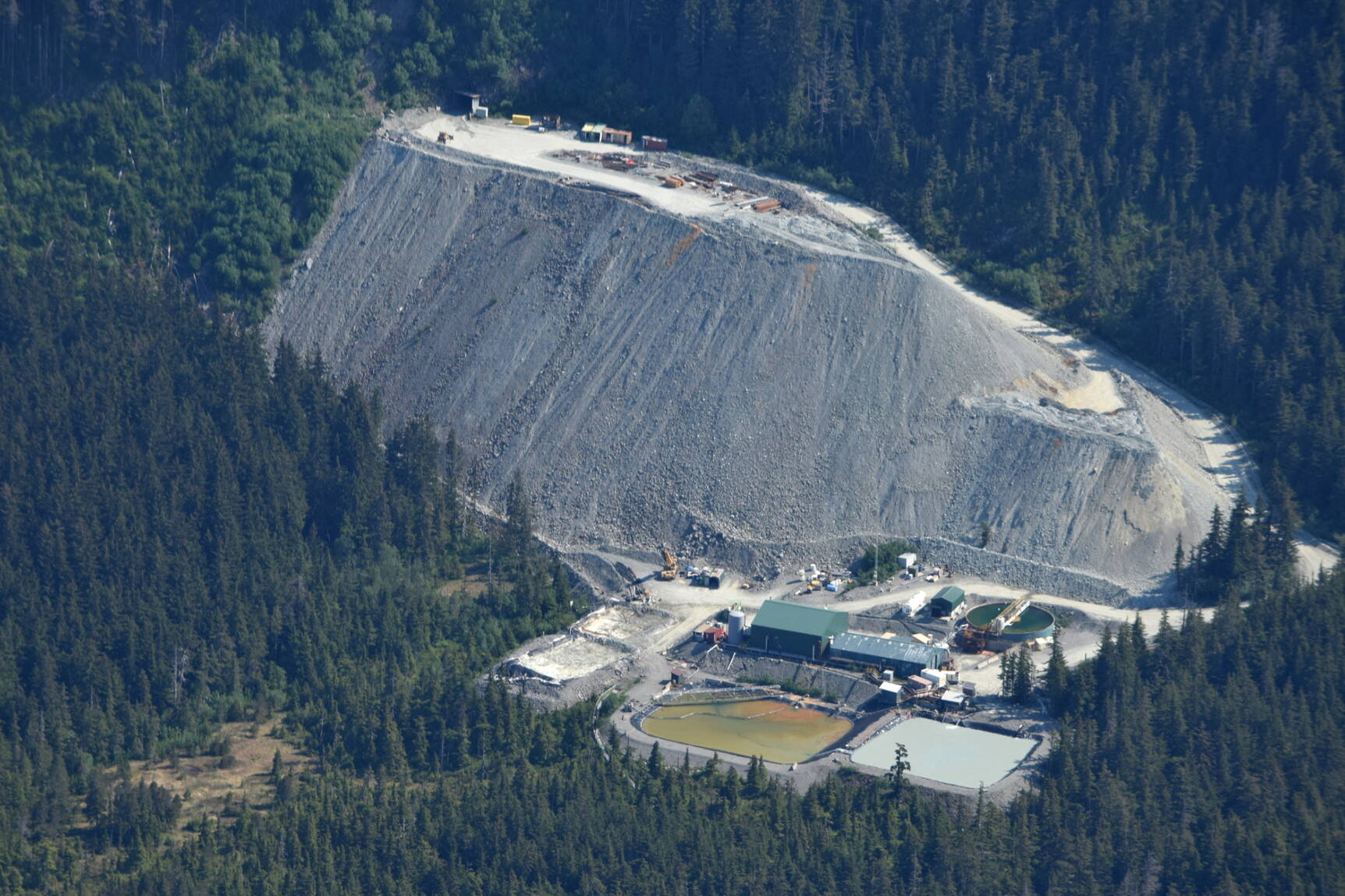This story was originally published by Northern Journal.
On the morning of Aug. 9, state biologists discovered dozens of dead fish in a creek near the Kensington gold mine in Southeast Alaska.
Scientists from the Alaska Department of Fish and Game say their observations — and the fact that the die-off occurred downstream of a wastewater treatment plant at the large mine — suggest that the event stemmed from a water quality problem. Mine workers also used an unapproved explosive at Kensington a day before the dead fish were found, according to federal officials.
But nearly two months later, state regulators at the Department of Environmental Conservation say they still haven’t determined what killed the fish, including Dolly Varden char, a small freshwater species called slimy sculpin, and one pink salmon.
DEC, which regulates mining wastewater and investigates chemical spills, is still waiting for water quality data from the mine’s operator, according to Gene McCabe, the director of the agency’s water division.
“Of course, everybody involved has hunches,” McCabe said. “They have thoughts. They have likely causes. But none of that is substantiated yet.”
Coeur, the multinational company that operates Kensington Mine about 40 miles north of Juneau, is “still awaiting results from multiple independent laboratories with varying timelines,” company spokesperson Rochelle Lindley said in an email this week.
She would not say exactly when Couer expects to receive results from the different labs.
Tribal governments and other observers in the area of the mine, meanwhile, say that they’ve received little information from state regulators.
A few days after the incident, the U.S. Forest Service, a federal agency that manages the land around Kensington, notified leaders of the region’s largest tribal government, the Central Council of Tlingit and Haida Indian Tribes of Alaska. The agency also, a few days later, provided them with some preliminary information, according to Jill Weitz, who works in government affairs for Tlingit and Haida.
While Weitz said she appreciated the federal notification, she has been frustrated by what she described as a lack of communication from state agencies. Officials from Chilkoot Indian Association, another tribal government in the area, also said the state did not formally alert them to the spill.
It’s the second time this year that tribal officials have raised concerns about their access to information after an incident in the vicinity of Kensington.
In March, Tlingit and Haida’s president, Richard Peterson, urged state and federal regulators to improve communication after the tribe was not notified — for a month — about a January tailings spill at the mine, which appears to be unrelated to the August fish kill.
“The lack of timely communication and transparency in such matters undermines our ability to effectively respond and protect our tribal citizens and ancestral lands,” Peterson wrote.
The idea that the state hasn’t kept local tribes apprised is “problematic,” said state Sen. Jesse Kiehl, a Democrat from Juneau — though he added that state agencies have provided information to his own office. He also applauded Coeur for being the first to notify him and for being responsive to questions.
The biologists from the Department of Fish and Game discovered the dead fish during a routine salmon survey in Sherman Creek, which flows into the Inside Passage between Juneau and the towns of Haines and Skagway to the north.
Coeur discharges treated mine water directly into Sherman Creek, at a point above where the fish appear to have died. Other Dolly Varden were found alive above the mine’s discharge, the biologists wrote in a Sept. 6 report.
Kensington mine’s wastewater discharge into Sherman Creek. (Alaska Department of Fish and Game)
Of the dead fish the scientists collected, there was “no obvious body composition or cloudiness in the eyes, suggesting recent death,” wrote one of them, Erika King. They also saw hemorrhaging on multiple Dolly Varden.
Immediately, King wrote, the biologists notified a Coeur official and asked the company to take water samples. The official reported no unusual operations at the water treatment plant, and company staff collected more dead fish samples.
The circumstances — multiple species of fish dead below the treatment plant outfall and none dead above — “strongly suggest water quality or toxic issues delivered by the treatment plant effluent,” according to a state pathologist, Ted Meyers, whose findings are appended to King’s report. Meyers ruled out infection as the cause of death.
The department’s lab work did not involve water quality or fish tissue testing for toxic chemicals, according to Department of Fish and Game spokesman Joe Felkl.
Whatever killed the fish appeared to be a short, isolated episode, Coeur and state biologists said.
In August, Lindley, from Coeur, told Northern Journal that the company immediately notified regulators when the fish were discovered, coordinated with agencies to send samples to third-party labs for testing and was continuing to monitor the stream.
McCabe, from the state Department of Environmental Conservation, said it’s standard practice across the state for mining companies to collect and self-report water quality data. Their monitoring and testing plans must be approved by state regulators, he added.
“All routine water quality testing has been within permit parameters,” Lindley said in an August email.
Coeur did not respond to follow-up questions this week about an unapproved explosive that was reportedly used underground at Kensington on Aug. 8, the day before the biologists’ discovery. The explosive was noted in an August email from the Forest Service to tribal officials.
A Forest Service spokesperson this week referred requests for information to Coeur.
McCabe said the agency did not have enough information to say whether use of the explosive could be tied to the dead fish.
“At this point, without any water quality data, it’s pure speculation,” McCabe said. “We want to avoid speculating about any potential link or cause until we have some data to evaluate.”
• Max Graham can be contacted at max@northernjournal.com. This article was originally published in Northern Journal, a newsletter published by Nathaniel Herz. Subscribe at this link.

